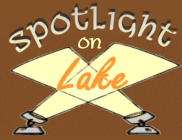
Deer reduction zone season begins Sept. 15
Deer reduction zones give hunters opportunities to harvest deer in defined urban areas and along portions of Indiana highways in addition to the harvests allowed by statewide bag limits elsewhere in Indiana. Check out our map to find a zone near you.
There is a statewide bag limit of 10 for deer harvested in reduction zones during the reduction zone season. To fulfill the earn-a-buck requirement for the reduction zone season, a hunter must harvest a doe before harvesting a buck, both of which must be counted toward the reduction zone bag limit when checking in the deer.
Hunters will need one of the following licenses to count deer toward the reduction zone season bag limit: deer reduction zone license, resident youth hunt/trap, lifetime comprehensive hunting, or lifetime comprehensive hunting/fishing license. Archery equipment and crossbows can be used in deer reduction zones starting Sept. 15.
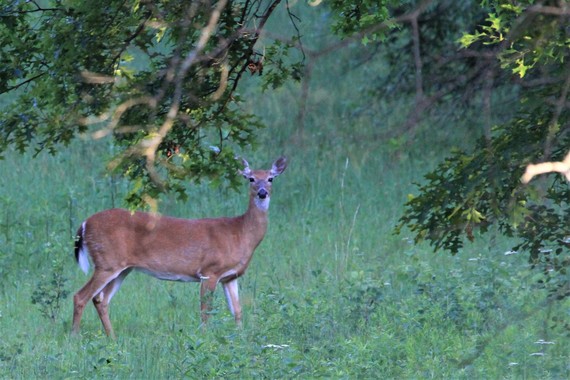
Please note: Areas located within deer reduction zones are not necessarily open to hunting. Hunters will need to obtain permission to hunt private property located within reduction zones or contact public property management to clarify if the property allows hunting or has certain restrictions.
Additional reserved hunt opportunities available
If you missed the deadline for earlier reserved hunt opportunities, don't worry - there's more! Hunters can apply for additional reserved hunt opportunities online. Remember: The online method is the only way to apply for the hunts listed below. No late entries will be accepted. Applicants must possess a hunting license that is valid for the hunt for which they apply. Available hunt opportunities include:
- November Game Bird Habitat Area Pheasant, open Aug. 16 - Sept. 30
- Indiana Private Lands Access Game Bird, open Aug. 16 - Sept. 30
- December Game Bird Habitat Area Pheasant, open Sept. 27 - Oct. 31
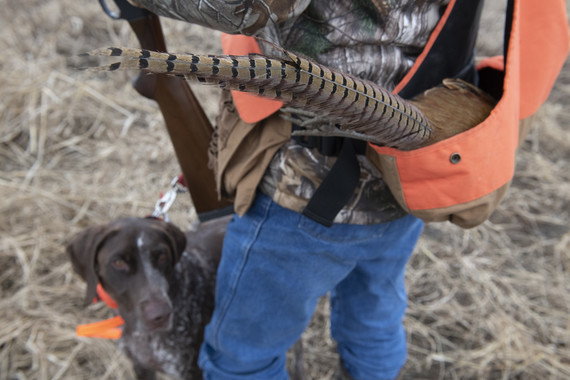
Reserve a spot for put-and-take pheasant
Hunters can now purchase a reservation for put-and-take pheasant hunts online. Put-and-take hunts are no longer available on a first-come, first-served basis at Fish & Wildlife areas (FWAs). To reserve a spot, click “Apply for a reserved hunt” on our website.
The cost is $30 per reservation. Reservations are non-refundable; however, they can be transferred to another person. Registrants will receive an email notification upon completion of the reservation that includes their hunt registration ID, date reserved, and property name. Individuals should keep this confirmation for their records.
FWAs participating in put-and-take hunts this year are Atterbury, Glendale, J.E. Roush Lake, Pigeon River, Tri-County, Willow Slough, and Winamac.
All hunters are required to have a current Indiana Hunting License and Game Bird Habitat Stamp to participate in this hunt.
Hunting seasons beginning in September
Snipe: Sept. 1 – Dec. 16
Sora Rail: Sept. 1 – Nov. 9
Dove: Sept. 1 – Oct. 17
Canada geese (all zones): Sept. 11 – 19
Early teal: Sept. 11 – 26
Deer reduction zone: Sept. 15 – Jan. 31, 2021
Youth deer: Sept. 25 – 26
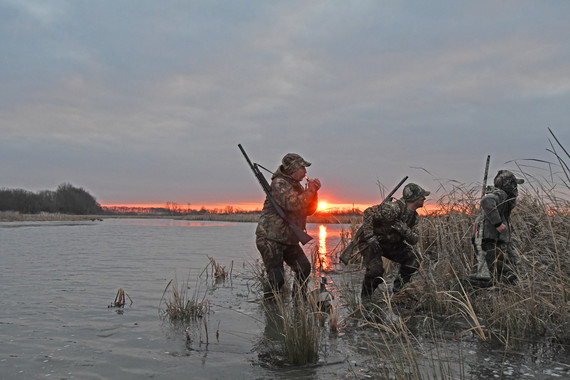
Prepare for waterfowl season
Indiana’s waterfowl hunting seasons begin in September. These seasons include those for early teal and regular waterfowl seasons for geese. Ducks, coots, and mergansers open in October and November, depending on your hunting location. Look ahead and start planning your hunting trips today.
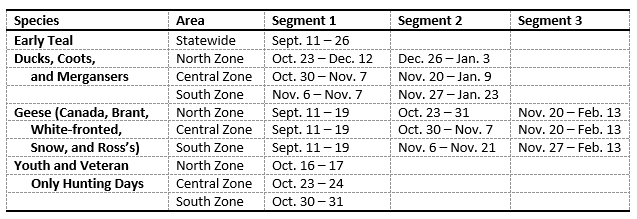
For information on daily limits, shooting hours, and other regulations, as well as dates for falconry, visit our website.
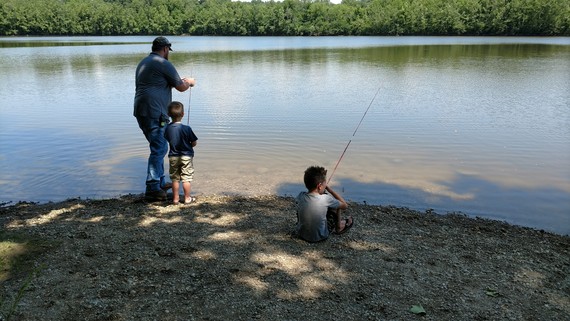
Connect with nature on Sept. 25
Sept. 25 is National Hunting & Fishing Day. Created in 1971 to thank hunters and anglers across the U.S., the day recognizes the power of individuals as a positive force in the protection of natural resources. The day also serves to acknowledge all the ways these groups have provided the funding foundation for wildlife conservation. Join us in this celebration by exploring some of the many Fish & Wildlife areas, parks, forests, and other public land available throughout Indiana.
Looking for a more hands-on way to experience the state’s natural spaces? Sept. 25 is also the last Free Fishing Day of 2021. On Free Fishing Days, Indiana residents can fish Indiana’s public waters without a fishing license or trout/salmon stamp. Several hunting seasons will also be open, including dove, sora rail, snipe, early teal, and squirrel. Also, youth deer season starts the same weekend. As fall begins in Indiana, invite your friends and family to join you outdoors and take time to safely do what you love with those you love spending time with.
Explore a new DNR property on National Public Lands Day
On Saturday, Sept. 25, DNR will celebrate National Public Lands Day, a day to get outside and explore a new DNR property or revisit a favorite one. While you’re there, you can participate in the nation’s largest annual volunteering day. Many properties are hosting volunteer events, but every act of kindness counts. Whether you pick up trash on a walk or volunteer at an event, you are leaving the place better than you found it.
On Sunday, Sept. 26 you can take our challenge to explore a new DNR property by visiting any state park or state forest for free. Share pictures of your acts of kindness by using #NPLD2021.
Get your deer checked for CWD for free
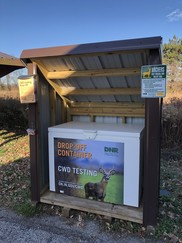
This year, Indiana DNR will continue to provide free testing for hunters interested in having their deer tested for chronic wasting disease (CWD). Although CWD has not been detected in Indiana, the serious neurological disease has been found close to our state’s borders in Illinois, Michigan, and Ohio. Hunters may voluntarily submit samples for testing at select Fish & Wildlife areas (FWAs) and state fish hatcheries (SFHs) throughout the hunting season. Deer heads can be dropped into designated coolers at select FWAs and SFHs, or hunters may make an appointment for their harvested deer to be sampled by a biologist during office hours. Tongue tags will also be available for hunters who wish to have their deer’s head mounted and sampled for CWD – just follow guidance provided at designated coolers or given by DNR staff. Testing results will available online. Hunters are also able to independently submit their deer to the Indiana Animal Disease Diagnostic Lab (ADDL) for testing for a fee. Hunters should complete the submission form and follow the shipping instructions on ADDL’s website.
Hunters who submit a deer for CWD testing will receive a metal tag that is reminiscent of Indiana’s historical deer harvest confirmation process. The tag will be mailed to them at the end of the deer season.
New and renovated ramps provide access and opportunity
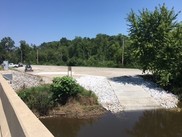
Our Public Access Program staff have been hard at work renovating and constructing new ramps across Indiana’s waterways and water bodies. Pictured here is the newly renovated ramp along the Kankakee River in Shelby, which previously was difficult to use due to built-up sediment. The ramp’s new orientation should prevent the problem from reoccurring and allow boaters to access the river year-round. Ramps at Green Valley Pond Public Fishing Area and Daredevil Pit at Chinook Fish & Wildlife Area also received some needed upgrades this summer.
Renovations are underway for the Lake of the Woods and Koontz Lake Public Access Sites in Marshall County and Riverview Public Access Site in Sullivan County. A new canoe/kayak launch along the Big Blue River in Knightstown and renovations for Golden Lake and Fox Lake are also on the program’s agenda for later this year. Our staff look forward to continuing to provide quality access to Indiana’s waters through these free-to-use sites. Find a public access site near you on our Where to Fish Map.

Bowhunters – Help us collect information on wildlife
The Archer’s Index is a survey that relies on volunteer archery hunters to report wildlife observations while they are afield in the fall. Sightings are collected from Oct. 1 through Nov. 12. These observations help DNR understand how populations of wildlife such as white-tailed deer, opossums, and coyotes are changing over time. If you are interested in supporting this long-running effort to inform wildlife management, sign up to volunteer.
Signs of a healthy body of water – diverse plant life
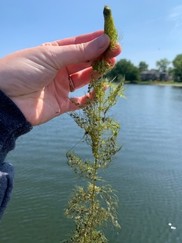
Earlier in August, fisheries biologists were busy conducting aquatic vegetation surveys to evaluate the diversity of plant life in lakes across Indiana. A diverse plant community can be one sign of a healthy body of water and is essential for providing safe spaces for fish and other aquatic life to hide, raise young, and feed. The top five plants found across Indiana included coontail, chara, Eurasian watermilfoil (an invasive species), eel grass, and sago pondweed.
You can learn more about establishing or managing aquatic plants in your private pond or lake in our Fish Pond Management Guide.

Photo courtesy of Dan Zachary.
Small game, big opportunity
Squirrel and mourning dove hunting seasons are currently open, and rabbit, Northern bobwhite, and pheasant seasons will open on Nov. 1. These small game species provide exciting hunting opportunities and great table fare. Part of what makes them so popular is the minimal equipment needed: usually a shotgun, hunter orange clothing, and some good footwear. A dog is a welcome addition to the pursuit of small game, but many hunters have success without dogs.
Small game hunting is often more relaxed than hunting for larger game, and it provides a great opportunity for camaraderie with friends and family. The relaxed atmosphere and minimal gear needs make small game hunting an ideal way to introduce beginners to hunting. Whether you are an experienced or brand-new hunter, get out this fall and take advantage of the small game hunting opportunities Indiana has to offer and be sure to bring a friend. Check out our Where to Hunt Map to help you find a spot to hunt.
Updates on the bird disease outbreak
In early August, DNR updated its recommendations for bird feeding as they relate to the ongoing bird disease outbreak. Based on the data received from reports submitted by Indiana residents, it appears that the bird illness is consistently affecting specific areas. Counties that have a no-feeding recommendation include: Allen, Hamilton, Hendricks, Johnson, Lake, Marion, Monroe, Porter, and St. Joseph.
Any updates made to feeding guidance will be available through the webpage. Subscribe to receive email notifications when updates are made on the website.
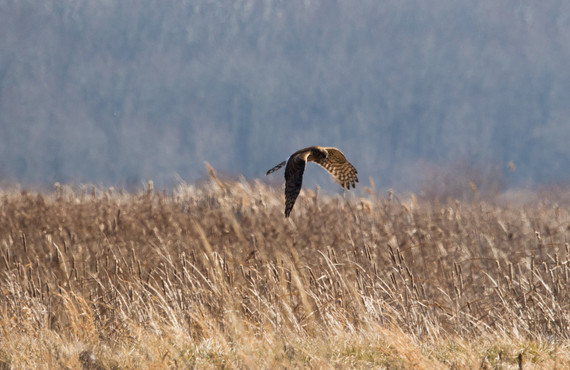
Northern harrier seen at Goose Pond FWA.
Join in the Big Sit! on Oct. 10
We agree with Birdability—birding is for everybody and every body. If you’re looking for accessible places to enjoy birding, consider Pisgah Marsh Area and the Goose Pond Fish & Wildlife Area Visitor Center. Both are designed to provide an excellent birding experience for everyone, including those who enjoy birds while seated. On Oct. 10, both locations will host a Big Sit!, which is a stationary birding opportunity. While other birding outings can involve multiple stops and walking, the Big Sit! encourages people who enjoy birding to sit together and enjoy the birds in one place. All ages and experience levels are welcome.
Learn more about the Goose Pond Big Sit! and the Pisgah Marsh Area Big Sit! online.
NRC meets Sept. 21
The Natural Resources Commission will meet on Sept. 21 at 5 p.m. ET at the McCormick's Creek State Park Canyon Inn, Oak Room. The agenda will be posted before the meeting.
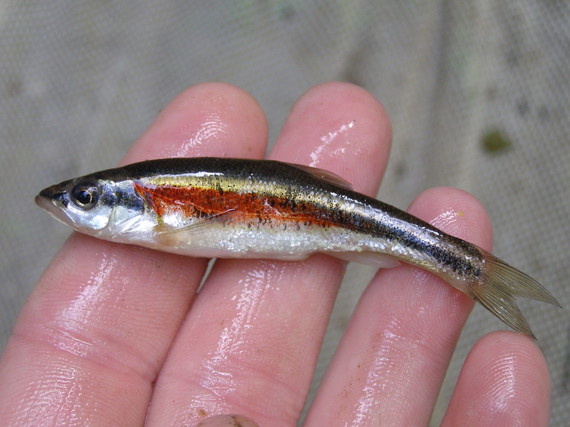
Indiana Nongame Wildlife Fund at Work: Fish
Most people might think of a “minnow” as any small fish, but there are more than 50 different species of minnows found swimming in Indiana’s waters. Until recently, one of the rarest was the state endangered redside dace (Clinostomus elongatus). Distinguished from other minnows by its large mouth and small scales, it inhabits headwater streams – those that almost dry up each summer. Fewer than 20 years ago, the redside dace was found in only two small watersheds located in north-central and southeastern Indiana. As a result of conservation efforts and surveying made possible by donations to the Indiana Nongame Wildlife Fund, biologists now have records of this small fish in 10 unique drainages throughout the state.
If you believe you’ve caught or collected a redside dace, send us a photo at fishid@dnr.IN.gov. Sign up to receive news about Indiana DNR's work to conserve our state's rarer wildlife.
Recent news releases
Aerial herbicide applications planned for Blue Grass and Goose Pond FWAs
CHAP announces 2021 successful grant applicants
Aerial herbicide applications planned for Kingsbury and LaSalle FWAs
Dead black bear found on Elkhart County roadside
Sign up for additional reserved hunt opportunities
LARE grants to benefit 26 lake and stream projects
Provide input on fish and wildlife regulations
Upcoming events
- Sept. 11 - Weed Wrangle, Winamac FWA
- Sept. 18 - Fall Cleanup Day, Blue Grass FWA
- Sept. 19 - Youth Day at the Range, Kingsbury FWA
- Sept. 25 - Dressing of the Blinds, Kankakee FWA
- Sept. 30 - Weed Wrangle, Jasper-Pulaski FWA
- Oct. 10 – Big Sit!, Pisgah Marsh Area
- Oct. 10 – Big Sit!, Goose Pond FWA
More
- Buy a license
- Hunting information
- Where to Hunt
- Fishing information
- Where to Fish
- Fish & Wildlife properties

The Indiana Natural Resources Foundation celebrates and preserves Indiana’s natural legacy by raising funds to support the Indiana Department of Natural Resources (DNR) and its programs. Together, we have helped expand public lands, restore wildlife habitat, and create outdoor educational and recreational opportunities for Hoosiers.
About Fish and Wildlife Management in Indiana
Fish and wildlife management and public access are funded by fishing and hunting license revenue and also through the Wildlife and Sport Fish Restoration Programs administered by the U.S. Fish & Wildlife Service. These programs collect excise taxes on sporting arms and ammunition, archery equipment, fishing equipment, and motor boat fuels. The money is distributed among state fish and wildlife agencies based on land size and the number of licensed anglers and hunters in each state. Find out more information about fish and wildlife management in Indiana at Wildlife.IN.gov.
